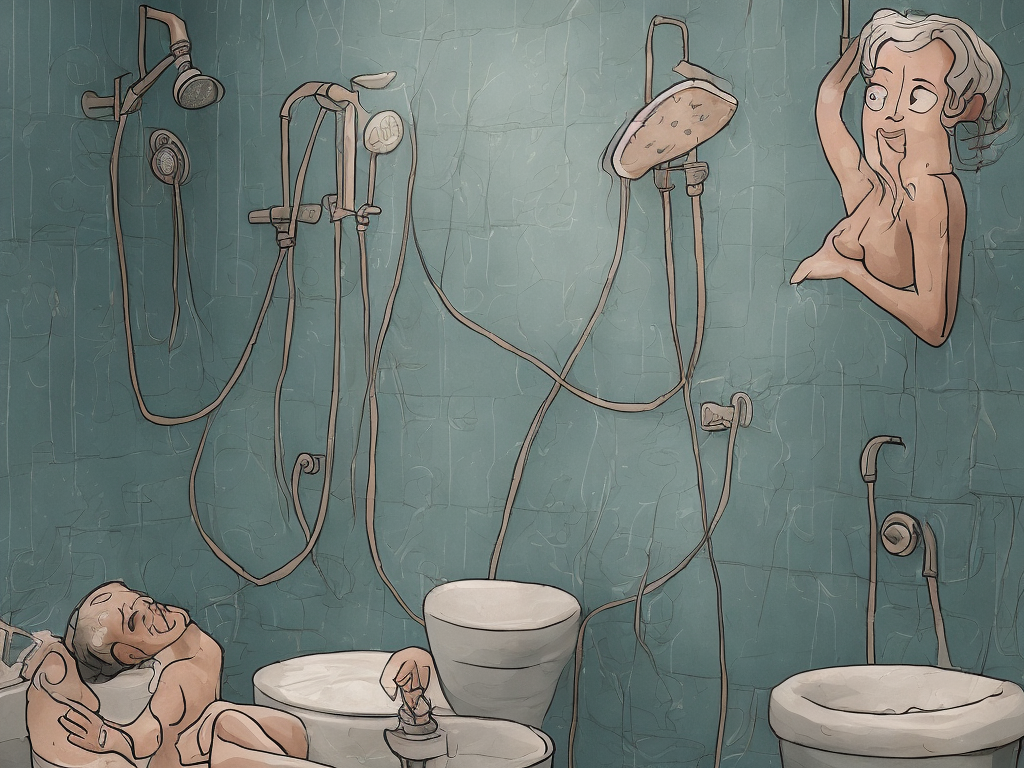
The Difference Between Bath And Shower
One of the most essential daily activities we engage in is personal hygiene. Keeping ourselves clean is not only important for our health but also for our overall well-being. Among the various ways to cleanse our bodies, bathing and showering are the most common methods used by people all over the world. While both may seem similar in nature, there are several differences between the two. In this article, we will explore the dissimilarities between taking a bath and having a shower.
To begin with, let's understand what each of these activities entails. Taking a bath involves filling a tub or basin with water and immersing oneself in it, allowing the body to soak. On the other hand, showering involves standing under a spray of water that is typically provided by a showerhead. These two methods of cleansing share the objective of washing away dirt, sweat, and odor, but the way they are experienced and the benefits they offer vary significantly.
One notable difference between baths and showers is the amount of water used. When taking a bath, a considerable amount of water is required to fill the tub, and depending on the size of the tub and the preferences of the individual, this can range from thirty to fifty gallons per use. On the other hand, showers are generally more water-efficient because the water flows continuously for a shorter period. With the aid of a showerhead, the water is directed towards the body, minimizing the quantity of water used. Typically, taking a shower consumes about twenty gallons of water in a ten-minute session, making it the more environmentally friendly option.
Another aspect that sets baths and showers apart is the temperature of the water. People have different preferences when it comes to the temperature they find most comfortable for bathing or showering. However, it is commonly observed that baths tend to involve hot water, while showers can be taken with a wide range of temperatures. The reason behind this is the immersion factor of bathing, where one can sit and relax in hot water, relieving stress and tension. Showers, on the other hand, are more invigorating, and the sensation of warm water cascading down the body can be refreshing.
The way in which baths and showers are experienced also differs. Taking a bath is often viewed as a more relaxing and indulgent activity. It provides an opportunity to unwind, soak, and take a break from the demands of everyday life. Many people find that adding bath salts, essential oils, or bubbles to the water enhances the experience, creating a soothing and calming atmosphere. Some even choose to light candles or play soft music while bathing to further enhance relaxation. In contrast, showering is often considered a quicker and more practical way to clean oneself. It is ideal for individuals with a busy lifestyle who need to get ready for work or other activities in a limited timeframe. Showering is typically a more efficient and time-saving method, with most people spending around five to ten minutes under the water.
Moreover, the way a bath or shower affects the skin can vary. Bathing is known to have a hydrating effect on the skin, as the warm water opens up the pores and allows moisture to penetrate deeper. This can be particularly beneficial for individuals with dry skin or certain skin conditions. On the other hand, showering can have a rejuvenating effect on the skin. The continuous flow of water can help wash away dead skin cells, oil, and dirt that may accumulate on the body. Additionally, cooler water used during showers can have a tightening effect on the skin, leaving it feeling refreshed and invigorated.
Lastly, there are certain health considerations to keep in mind when choosing between a bath and a shower. Baths are often recommended for individuals who are nursing muscle soreness, stiffness, or certain types of injuries. The warm water can help ease muscle tension and promote relaxation. Showers, on the other hand, are considered more hygienic for individuals with certain conditions, such as fungal infections or open wounds. The continuous flow of water can minimize the risk of bacterial growth and ensure thorough cleansing of the affected areas.
In conclusion, while both baths and showers serve the purpose of personal hygiene, they offer different experiences and unique benefits. Baths are often seen as more luxurious and indulgent, providing an opportunity to relax and unwind. On the other hand, showers are considered more practical and time-saving, ideal for individuals with busy schedules. The amount of water used, the temperature, the effects on the skin, and the health considerations vary between the two methods. Ultimately, the choice between a bath and a shower depends on individual preferences, needs, and constraints. Whatever the preference may be, maintaining good personal hygiene through regular bathing or showering is crucial for our overall well-being.
 Self-Instruct
Self-Instruct